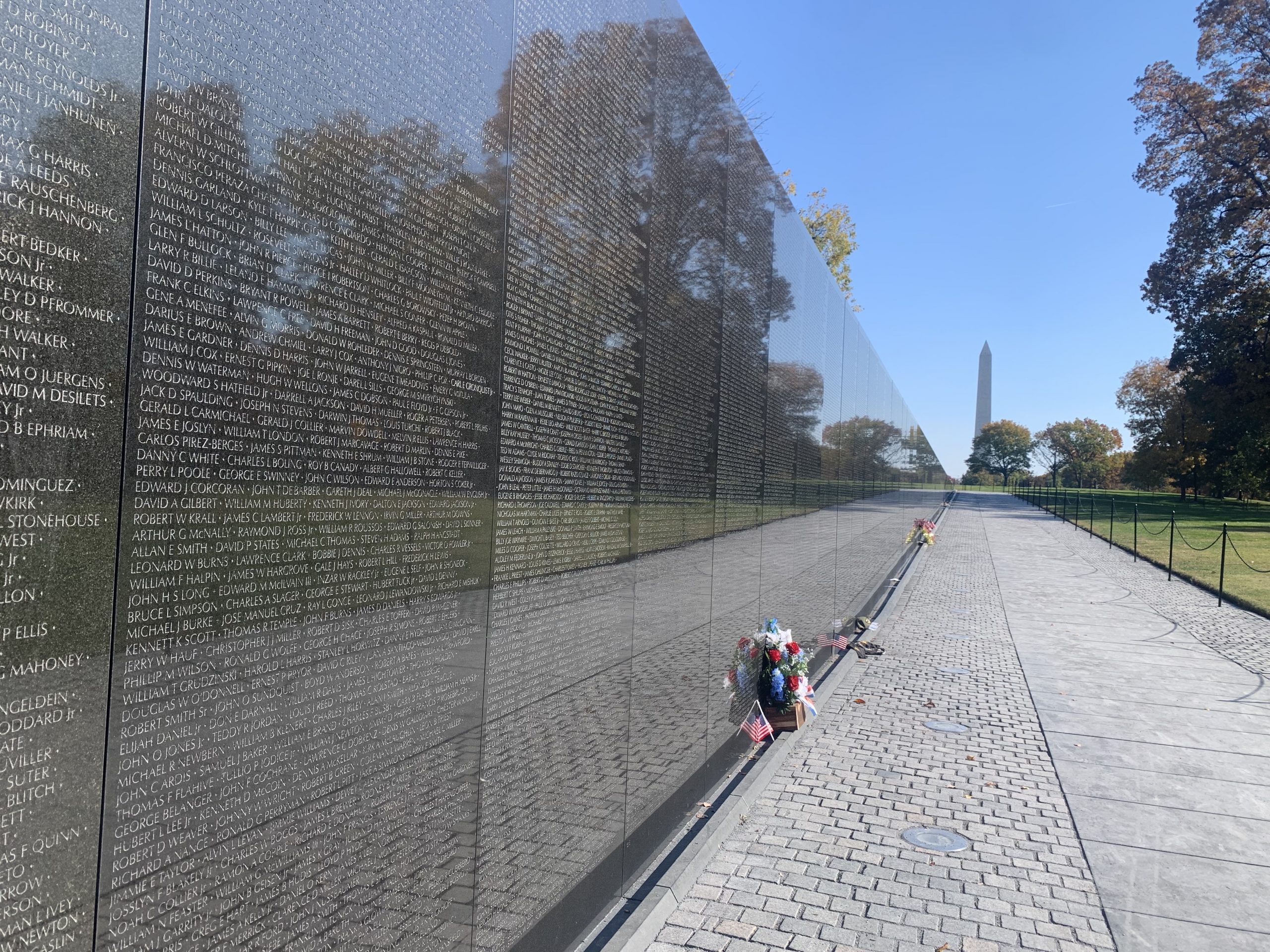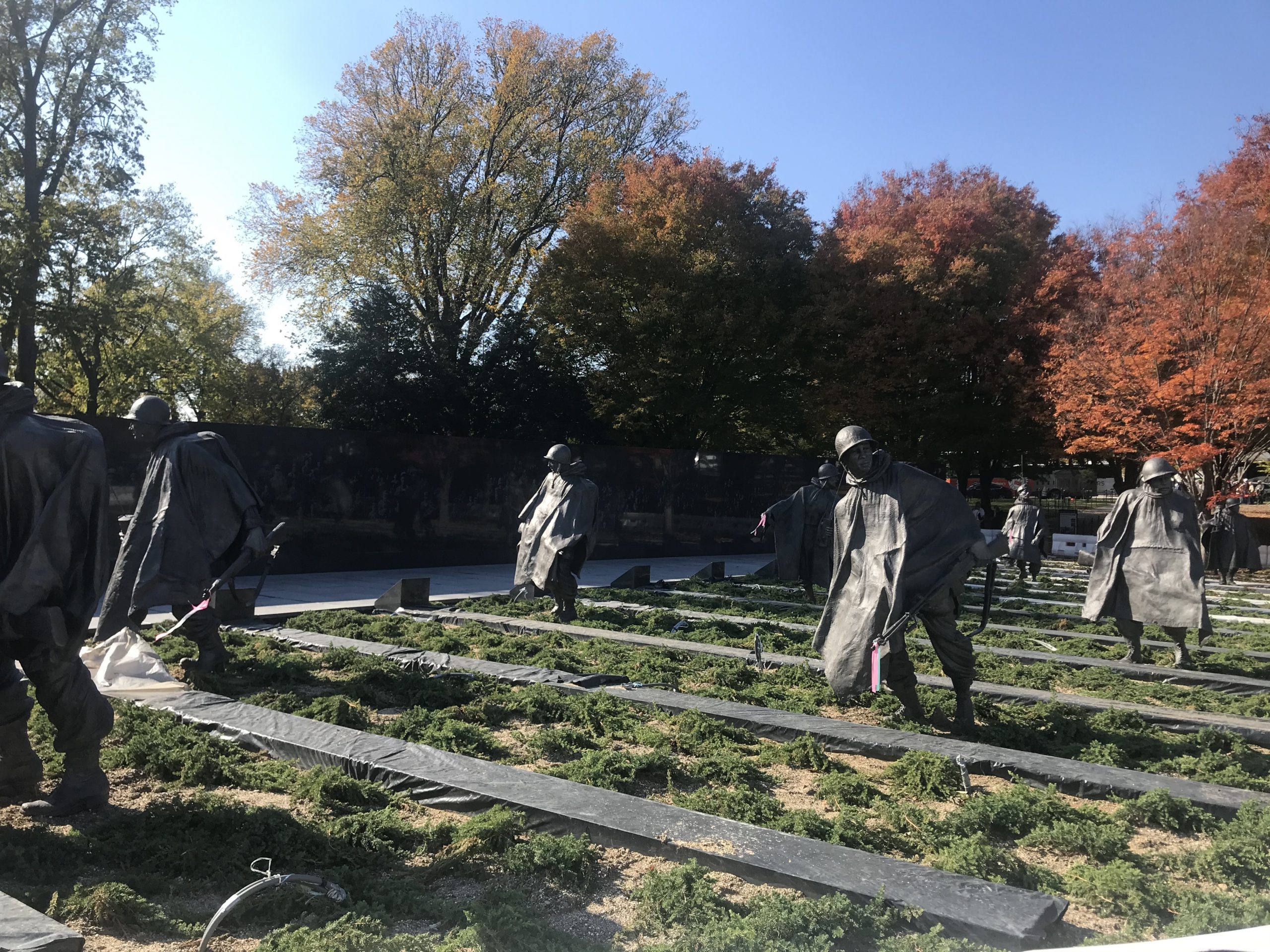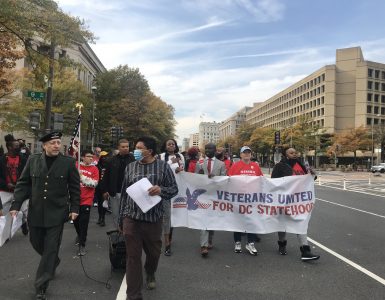On the quad of California State University, Fullerton, then-student Larry Nunez remembered standing, fists and teeth clenched. Home from serving in Vietnam, his eyes were fixed on the sight of an effigy of the president in flames in a protest against the war.
Noticing his tense stance, another young man, slightly older than he, Nunez recalled, asked if Nunez was a veteran. Nunez didn’t respond.
“Don’t tell anyone here that you are,” the man said.
Nunez said he didn’t understand why.
“I’m in the United States. I’m glad I had served, but yet we’re not good enough,” Nunez told The Wash, recalling a decades-old pain.
On Wednesday, the day before Veterans Day, veterans and others at the Vietnam Veterans Memorial, World War II Memorial and Korean War Veterans Memorial, three of the 17 monuments, museums and memorials in D.C. honoring those who have served in the military, said it’s important for younger generations to learn about the country’s past. They shared memories of war and family to emphasize the importance of documenting history.

Vietnam Veterans Memorial: The ‘wall that heals’
When Nunez left the United States to serve in the Army during the Vietnam War, he said he went out the “front door,” proud to be a soldier for his country. However, when he returned, he came in the “back door,” troubled by the stigmas surrounding the war in Vietnam.
“I was more afraid of people coming back to the states than I was in Vietnam,” Nunez said.
At the end of the Vietnam War in 1975, the veterans returning home weren’t greeted with ‘Welcome Home’ parades, but with protests and criticism. Although the war led to controversy across the nation, Vietnam War veterans visiting the memorial are proud to have served.
Opened in 1982, the Vietnam Veterans Memorial serves to commemorate those who died or are still missing from the war. The names of those who died in the war are identified with a diamond and those who are still missing, a cross. When someone is deemed no longer missing, the cross is altered to become a diamond.
The black granite walls list the names of 58,318 soldiers who fought in the war. Bill Walters, a volunteer at the memorial and a Vietnam Army veteran, said they were purposely designed by architects Mary Lin and David Osler to be reflective.
“This monument is about all the names. It’s about all the people,” Walters said. “That’s an awful lot of names.”
Walters said he enjoys when school groups come to visit the memorial so they can learn more than what “they might have read in a history book.”
Haartz first came to ‘The Wall’ in 1996 with his original battalion. He said that if it weren’t for the group, he might have never come. The camaraderie and support he has had when coming to ‘The Wall’ has “helped” his “demeanor.”
“The guys that don’t come to the wall don’t know what they’re missing,” Haartz said. “It’s really a wall that heals.”
When asked how it felt to come to the memorial, “Krazy” Karl Haartz, a Vietnam War Army veteran visiting from Campton, New Hampshire, who served alongside Nunez in the 5th Battalion 7th Cavalry, said it is nice to “be together.”
“Coming to the memorial is…” Haartz started.
“Soothing,” Nunez chimed in from the other side of the bench.
World War II: The deadliest conflict
Mary and Gary Brown visited the World War II Memorial Wednesday while in town celebrating their daughter’s birthday. The Arizona residents, who are retired, said both of their fathers served in the military during World War II, hers in the United States and his in northern Africa.
“My father was pretty quiet about his World War experience,” said Gary Brown, standing in front of a fountain at the memorial’s center. “I think being a flight engineer and being in planes so much he became pretty hard of hearing.”
World War II, the deadliest conflict in human history, began when Nazi Germany invaded Poland in 1939, triggering a six yearlong conflict involving most nations. Nazis murdered 6 million Jews during the Holocaust, which began in 1941, in addition to millions more.
Mary Brown said her mother served as a civil servant in Detroit, Michigan, during the war. She said memorials, like the one commemorating Americans who served during World War II, are important to remember “our history, our foundation.”
For Gary Brown, the history of the war is personal in another way.
“World War II was very significant, particularly in Europe because my ethnicity is — I’m 100% Jewish,” he said. “I was born seven years after the Holocaust.”

Memorializing the Forgotten War
New York resident Juan Parra stood next to statues of soldiers Wednesday on his first visit to the Korean War Veterans Memorial. Parra, who described himself as a retiree of the delivery business, said while he finds war memorials interesting, he couldn’t help but think about what other kinds of historical sites may be missing.
“We’re supposed to have more monuments about peace,” he said.
The United States, in an effort to keep communism from spreading, supported South Korea in the war after North Korea invaded the bordering nation in 1950, according to Ohio History Central. The war, which never formally ended, left millions dead.
Parra also said the United States should have more memorials commemorating Black men who served.
His wife, Merrill Parra, said war memorials can help people learn more about the country’s history. Parra, who’s also retired, started a veteran’s program at Lehman College, City University of New York, where she served as director of Student Services.
“I bet you if you did a poll, people wouldn’t even know that we were in the Korean War,” she said.











Add comment